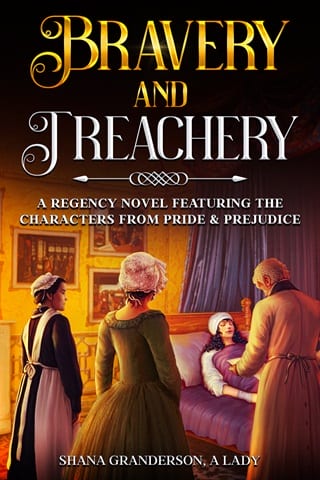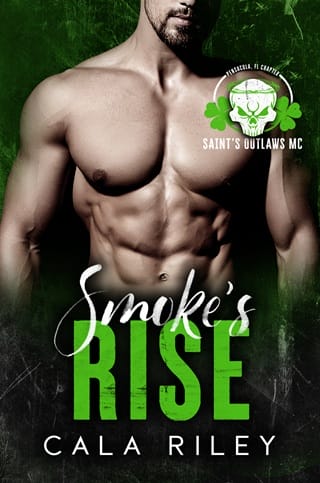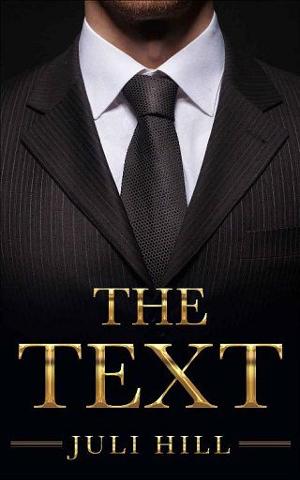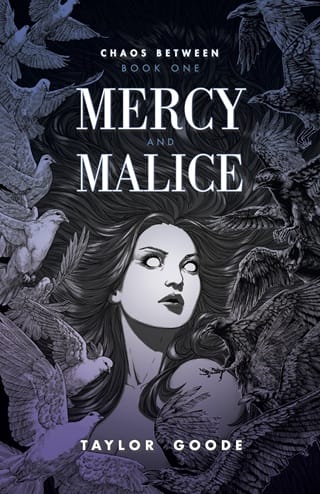Epilogue
Buckingham House July 20, 1821
L ady Elizabeth Darcy, her husband, and family had not all been together with the royals since the passing of Her Majesty, Queen Charlotte, from dropsy in November of 1818.
In a way it was something of a blessing that she had been called home more than a year before her beloved George joined her in heaven. The late King’s malady had never dimmed his Queen’s love for him. Until her own illness had confined her to her bed, Her Majesty had spent hours each day in the company of her beloved husband.
~~~~~~~/~~~~~~~
Since her marriage to William, Elizabeth had maintained a correspondence with Queen Charlotte, and had taken time to visit Her Majesty even after she had moved out of her Buckingham House, and into Kew Palace when her illness began to affect her ability to move.
When in London, the Darcys would spend time with the Regent, Maria Fitzherbert, Mary Anne, and Emma. The latter two had adopted Elizabeth as an older sister.
With each time she gave birth, Elizabeth would receive a personal note from Queen Charlotte with some extravagant gift from Her Majesty and the Regent. It began in November of 1812, almost eleven months after the wedding. Elizabeth had been larger than most of the ladies in the family had ever seen. She had begun her lying in a little before midnight on the tenth day of November. By the early hours of the twelfth, she had delivered twin boys who thankfully were not identical. Bennet Robert was the eldest by about a half hour and was the new Marquess of Hertford. Upon his majority he would become the Duke of Hertfordshire. Jacob Thomas was unlike the typical second son. Not only was he Viscount Lambton, but he was the heir to Pemberley and the other Darcy holdings and properties.
A fortnight after the twins’ birth, members of the Royal Guard had delivered gold, not gold-plated, cutlery, a plate, and bowl for each Darcy son. All Darcy could do when he saw what the royals sent was shake his head at the amount of money they had expended on gifts which would not be appreciated by his sons for many years to come.
A no less extravagant gift had arrived a fortnight after the birth of each subsequent child as well. The next to join the family was Robert Joseph in January 1815. Charlotte Jane, the much-anticipated daughter, arrived in the world in September 1817.She was named both for Her Majesty the Queen and her mother’s friend and stepmother in one person.
In July 1819, Annabeth Darcy, the baby of the family was born. Unlike Little Lotte, as Charlotte Darcy was called, who was a smaller version of her mother in character, intelligence, and colouring, Annabeth, according to her proud Papa, looked just like Aunty Anna.
~~~~~~~/~~~~~~~
Bennet had proposed to the then Charlotte Lucas two days after Elizabeth’s and William’s wedding. As she no longer needed to marry to support herself thanks to her best friend’s generosity, the only consideration for Charlotte was felicity and her feelings for Thomas Bennet. That he was almost twenty years her senior did not factor into her decision.
The truth was that the more time she had spent in Thomas’s company, the more she had come to realise she had fallen in love with him. Hence, when he had proposed, she had gladly accepted him .
Sir William Lucas had taken much pleasure in ribbing Bennet about his being his friend’s father-in-law. Lady Lucas did not say it, but her Charlotte would be the mistress of Longbourn, and she had not needed to marry a buffoon to achieve that aim. The reason Sarah Lucas said not a word of this to her eldest daughter was due to Charlotte not caring about the pecuniary advantages, only that she loved Thomas Bennet. That did not stop Lady Lucas feeling a sense of deep satisfaction. If only Fanny Gardiner was still in the area to witness it.
They had married in January 1812, and in February of the following year Tommy, Thomas Henry the younger, was born. Three years later Charlotte delivered Sarahbeth Bennet, and since then she had not become with child again.
Tommy, who turned nine in January 1821, would inherit Longbourn one day. Bennet was delighted that Sarahbeth, not yet six, seemed to be a miniature Lizzy. She had the Bennet colouring just like her much older sister, a similar shade of emerald green eyes, and was attempting to be as impertinent as her sister, Lizzy. Said sister had dowered Sarahbeth with the same amount as her other four sisters had had.
None of his five daughters born of the body of his former wife had lived at Longbourn for some years now. Besides being well pleased with his second wife and the companionship she provided, having two young children, being educated by Mrs Poppins, was also pleasing to him. Bennet and Charlotte were in the company of the five older daughters multiple times each year.
Whenever any of Bennet’s daughters’ families travelled near Longbourn, they would stop and spend some days at their childhood home with their husbands and children. In addition, a month or more each summer was spent together at one of the family’s estates, as they did during both Eastertide and Christmastide.
~~~~~~~/~~~~~~ ~
Two days before the end of January 1820, King George III succumbed to his long-time malady which had been diagnosed as a mental illness. On that day, the Regent had become King George IV.
The new King’s coronation—one of the most expensive in history and in keeping with the persona His Majesty presented to most—had been the previous day on the nineteenth of July 1821. Elizabeth and Darcy, Mary and Richard, and Jane and Andrew had been among the many nobles who had attended the ceremony held at Westminster Abbey which officially crowned the King.
Today, they and all of the extended family were attending a private celebration at Buckingham House. Among those who attended the gathering—people with whom the King could be his true self—were the two youngest Bennet sisters along with Anna, Mary Anne, and Emma.
~~~~~~~/~~~~~~~
Jane and Andrew Fitzwilliam, who were as in love, or more so, today as they had been when they married, had moved to Snowhaven two years previously. The move was not because Lord Reginald Fitzwilliam had passed away—he had not and he was still very much alive in command of all of his faculties. The reason was that Lord and Lady Matlock had decided it was time to hand over the reins of the properties belonging to the earldom to Andrew in order to retire and concentrate on spending time with their ever growing number of grandchildren. They counted not only their own sons’ children among their grandchildren, but those of the Darcys and other Bennet sisters, all of whom had adopted them as surrogate grandparents. The earl still attended the Lords, but intended to hand those duties over to Andrew by the end of the current year.
The first child who was born to Jane, a daughter, Madeline Rose, arrived in October 1812, a month before Lizzy’s and William’s twins. In May 1814, Reginald Andrew, the future earl arrived in the world. Another son, William Richard, joined the family in July 1816. By late 1817, Jane was enceinte once again, but shortly before she expected to feel the quickening she had suffered a miscarriage. Since then Jane had not become with child again.
Rather than lament what she did not have, Jane gave thanks for the three healthy and wonderful children with whom she had been blessed. Given the proximity of Pemberley and Castlemere to Snowhaven, when the Darcys were in residence at either estate, Jane and Andrew and their children spent much time in company with them.
~~~~~~~/~~~~~~~
Mary and Richard Fitzwilliam, thanks to the former being much more fecund than her eldest sister, had been blessed with a good number of children. The first, a son, Richard Andrew, Viscount Westerham, had entered the world at the end of September 1812, a fortnight before Maddie Rose, as she was called by all, had arrived. As such, he was the eldest of the grandchildren.
Rich was followed in January 1814, by Catherine Anna, called Kathy, then George Thomas in April 1816, Philip Reginald in August 1818, and the babe of the family, Elaine Lydia, called Ellie, in January of 1821.
Alongside of her older sisters, Lady Henderson was a leader of the Ton , and had in fact been invited to be a patroness of Almack’s after the death of Lady Cowper.
Living in Kent in no way restricted the amount of time Mary and Richard spent with the family. They passed the season in London where Lord Henderson sat with his father and William in the Lords as part of those who aligned themselves with the Whigs. Also, part of this group were the current Earl of Jersey (the former Viscount Westmore) and the Duke of Bedford.
~~~~~~~/~~~~~~~
Freed of her mother’s pernicious influence, found Anne de Bourgh as healthy as any other.She and the then Lord Westmore had met at the Bennet sisters’ double wedding in November 1811. They had seen one another in London and again at the wedding between the Duchess of Hertfordshire and Earl of Pemberley in December of that same year.
In January 1812, not long after Twelfth Night, Lord Wesley De Melville had received Anne’s permission to call on her. By the end of the month, they were courting; he proposed in mid-February; and a month later they were married. Anne was given away by her proud Uncle Reggie.
Until Lord Cyril De Melville, the late Earl of Jersey passed in mid-1819 they had split time between Rosings Park and Westmore in Essex, when they were not in London for the season. So far they had been blessed with a son and two daughters. Anne was in the family way once again. If they were not gifted with a second son, Rosings Park would go to their first born daughter.
~~~~~~~/~~~~~~~
Lord Sedgewick Rhys-Davies (called Sed by all who were close to him), the Marquess of Birchington and heir to the Duke of Bedford had met Miss Georgiana Darcy when she came out during the season of 1813, which she had shared with Kate and Lydia Bennet. Anna was eighteen and Sed four and twenty at the start of the season. There had been an instant attraction and by the end of that season, the two were engaged.
At the time, Darcy was wrestling with feelings of the impending loss of his sister’s protection, and had briefly considered withholding his permission. With urging from his co-guardian, Richard Fitzwilliam, and counsel from his beloved wife, Darcy had added his full throated consent and blessing to those bestowed by his brother-in-law. As hard as it was for him to cede his sister’s protection to another man, he had put Anna’s happiness and wishes ahead of his own selfish feelings. Anna and Sed had married from Pemberley in February 1814.
Before their first child was born in April 1815, the Duke of Bedford passed away from an ailing heart. Sed and Anna had been elevated from Marquess and Marchioness to Duke and Duchess. Thankfully, the dowager duchess, Lady Rose, was hale and healthy, and she was there to guide her daughter-in-law as she took over her new and extensive duties.
In the latter half of April, their first son, Albert Sedgewick—they had decided to start a new naming tradition—had been born and was the new Marquess of Birchington. In mid-1817, Anna had safely delivered a second son, and before the end of 1819, a daughter had joined the family. She was with child again. Thankfully Anna was not afflicted with the weakness which had taken her mother’s life shortly after her own birth. Each of her lying ins had gone as smoothly as such events can.
~~~~~~~/~~~~~~~
Unlike Anna, as sought after as they were for their massive dowries, Kate and Lydia had not been attracted to anyone during their first season. Kate met the man she would marry when visiting Lizzy and William in Derbyshire after her season.
Mr Adam Bannister was the son of a gentleman who had a large and profitable estate in western Derbyshire right next to the border with Nottinghamshire. He happened to attend an assembly in Lambton where he met Miss Bennet. At that point he was unaware of her connections or the reputed worth of her dowry. There had been an instant attraction, and Bannister had begun to call on Kate.
It was only once he had started to unofficially court her that he became aware of who her sister and brother-in- law were. By May 1814, Kate was married to Adam, and they were living at a secondary estate owned by the Bannisters in the southern part of Nottinghamshire. To date, they had two daughters, and Kate was with child again. This time, she was hoping for a son even though the Bannister estates were not entailed to the male line.
~~~~~~~/~~~~~~~
Lydia attended the season of 1814, and still did not find a man who she felt would be her match. During Eastertide of 1815, the whole of the extended family were hosted at Rosings Park and it is where Lydia met Mr Sidney Chambers, the parson who had been awarded the living at Hunsford after William Collins had been defrocked and then executed.
Chambers thought that he was far too low on the social scale for the sister of a very famous duchess to be interested in him, even though he had fallen in love with her. Being the third son of the Duke of Nottinghamshire, he was not poor, but he was aware Miss Bennet could attract many titled men with her reputed massive dowry.
It just so happened that the former flighty, flirtatious girl who had been enamoured with any man in a scarlet coat had gone and fallen in love with a clergyman. They married from Longbourn in July 1815, less than a month before Lydia turned twenty. Like Kate, she had two children, but unlike her next older sister, she had delivered two sons. Lydia suspected she was with child again and was praying hard for a daughter.
~~~~~~~/~~~~~~~
The Bennets and their extended family maintained a close relationship with Maria Fitzherbert, Mary Anne, and Emma. In 1814, Mary Anne married a man by the name of Stafford-Jerningham who moved to India with his wife to work for the governor of the colony in 1817. They had returned to England a few months after the late king’s passing.
Emma married Sir Edward Dawson-Damer, a baronet, in June 1815. They lived in Brighton near her mother.
~~~~~~~/~~~~~~~
Sir Edward and Lady Gardiner loved living at Netherfield Park, as did their children. Other than continuing to manage some of the investments, Gardiner effectively retired from his business which was left in the hands of the competent manager, Mr Potter, he had given a percentage of shares to, who would run the business until Peter, who was at Harrow currently, completed his education at Oxford and was ready to assume the management.
Lilly came out in 1820, but had not found a man she desired to spend her life with yet. Sir Edward and Lady Gardiner were grateful that May at almost seventeen and Peter who would be fourteen soon, would still be home with them for a few years yet.
The Gardiners visited the Darcys at Pemberley and Castlemere whenever invited, which was often, allowing Madeline to reestablish and further her connections with her friends in Lambton.
~~~~~~~/~~~~~~~
The villains who were still alive numbered three. Still ranting every day, Mrs Catherine de Bourgh remained in the small cottage on the Isle of Wight. As she had discovered the few times she had attempted to escape, she was well watched. The longer she lived as she did now, the more she understood her own insignificance.
After a three month voyage Misses Gardiner and Younge reached Van Diemen’s land. There they endured their seven years in servitude. At the end of their sentence, the two separated, never wanting to see one another again. It did not take Fanny long to realise her former beauty was long gone, so the only work she could find was as a servant. Nothing was heard of Miss Younge again.
The final female villain, Miss Caroline Bingley reached Boston, but was dead within two months of her arrival in the new world. She had angered some women with her superior attitude and rudeness, and one day while waiting to cross the street, she had been pushed in front of an oncoming conveyance. No one saw, or if they did, would say, who had pushed her.
~~~~~~~/~~~~~~~
Bingley was never sorry that he took over the reins of his family business again. Over the years he would see Darcy, the Earl of Pemberley. Although things were cordial when they saw one another, it was never the same as it had been all those years ago.
He married the daughter of a brewer of ale in Yorkshire and lived happily with her and their children at Bingley House in Scarborough.
The Hursts lived companionably at Winsdale after his father went to his final reward in early 1812. They had two daughters and a son.
~~~~~~~/~~~~~~~
The King approached the table where the Darcys and Fitzwilliams were seated. He waved for them to remain seated rather than stand on ceremony. “I wanted to express my thanks for all of you who attended the coronation yesterday, and the whole family’s attendance today.” He looked around the room wistfully at the children of the extended family playing quietly in one corner of the room under the watchful eye of the two former sergeant-majors. “It is my one great regret that I have no legitimate children to continue my line.” There was no mistaking the melancholy in the King’s statement. “At least thanks to our brave Lizzy, my daughter was kept out of harm’s way from the treachery that the late Weasley had planned.”
“As I have said once or twice over the years, it was no more than any other would have done,” Elizabeth averred .
“You believe that if you choose,” the King responded. “We all know the truth.” His Majesty was called away by his beloved Maria. “You will always be family to us,” he stated before he made his way to where Mrs Fitzherbert was standing with her good friends Elaine Fitzwilliam and Rose Rhys-Davies.
Elizabeth looked around the room. Most of those who were dear to her were present. As much as she always tried to downplay what she did that day, she was fully aware of the differences her actions had made in the lives of her family.
Darcy stood and touched his beloved wife on her shoulder. “Should I round up our children and their guards so we may depart, my love?” he enquired.
“Yes, William, it is time and I am ready to go home,” Elizabeth agreed.
All the bravery and treachery in the world would never come between them. As long as Elizabeth had her William and their family, and he had her and their children close by, all would be right with the world.
~~~~The End~~~~
 Fullepub
Fullepub 



